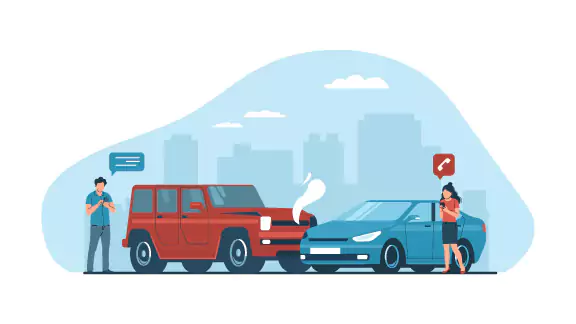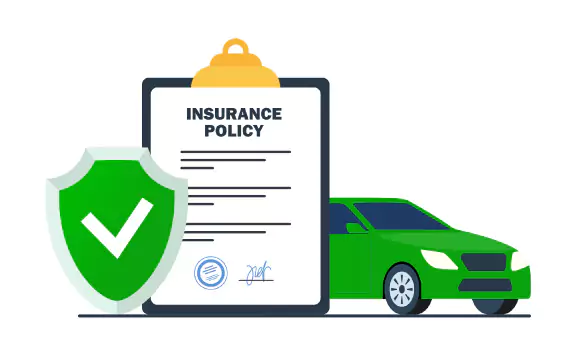Understanding the world of auto insurance can be overwhelming, especially when it comes to the wide variety of types of car insurance coverage options. Knowing what are the different types of coverage for auto insurance available can help you make informed decisions about protecting yourself, your vehicle, and your finances.
This guide provides an in-depth look at the six main types of car insurance coverage and additional car insurance coverages that are optional and can boost your policy coverage.
1. Liability Coverage
Liability Coverage is one of the most basic types of car insurance coverage and is required in most states. It has two main parts:
Bodily Injury Liability Coverage: This part of liability coverage helps cover costs associated with injuries sustained by other people if you are at fault in an accident. These costs can include medical expenses, rehabilitation, and in severe cases, compensation for lost wages or pain and suffering. The amount of coverage required varies by state, but it’s important to carry the right coverage to protect yourself from significant financial burdens.
Property Damage Liability: This part covers damage you cause to another person’s property. This can include damage to vehicles, buildings, fences, or other structures. Similar to bodily injury liability, each state sets its own minimum requirements for property damage liability, but higher limits are often recommended to ensure adequate protection.
Liability insurance coverage does not extend to your own injuries or property damage; it only applies to damages and injuries inflicted on others.
2. Uninsured and Underinsured Motorist Coverage
Uninsured and Underinsured Motorist Coverage is designed to protect you in situations where the at-fault driver lacks sufficient car insurance or the right coverage to cover damage.
Uninsured Motorist Coverage: If you’re involved in a car accident caused by an uninsured driver, this coverage helps pay for your medical expenses, and in some states, it can also cover damage to your vehicle. This type of coverage is particularly important in areas with a high incidence of uninsured drivers.
Underinsured Motorist Coverage: If the at-fault driver has insurance, but their policy limits are not enough to cover your expenses, underinsured motorist coverage steps in to fill the gap. This coverage helps pay for medical bills, lost wages, and sometimes vehicle repairs, ensuring you save money and are not left with substantial out-of-pocket costs.
The availability and requirements for uninsured and underinsured motorist coverage vary by state, law so it’s important to check your local regulations and consider these coverages based on your personal risk factors.
3. Comprehensive Coverage
Comprehensive Coverage protects your vehicle from damage that isn’t caused by a collision. This type of coverage includes protection against:
Theft: If your vehicle is stolen, comprehensive coverage can help reimburse you for its value, minus your deductible.
Fire: Damage caused by a fire, whether from an accident or another source, is covered under comprehensive insurance.
Natural Disasters: Events such as hail, floods, or earthquakes can cause significant damage to your vehicle. Comprehensive coverage helps cover repairs or replacement in these cases.
Vandalism: Acts of vandalism, including graffiti or intentional damage, are covered by comprehensive insurance.
One key aspect of comprehensive coverage is the deductible, which is the amount you pay out-of-pocket before the insurance company covers the rest. Comprehensive coverage is typically optional unless required by a lender or leasing company.

4. Collision Coverage
Collision Coverage is designed to pay for damage to your car from a collision. This can include:
Accidents with Other Vehicles: If you collide with another vehicle, collision coverage helps pay for the repairs to your car.
Collisions with Objects: Damage from hitting objects such as guardrails, fences, or trees is also covered under collision insurance.
Collision coverage reimburses you for the cost of repairs or replacement of your vehicle, up to its actual cash value, minus your deductible. Like comprehensive coverage, collision coverage is usually optional unless mandated by a lease agreement or loan conditions.
5. Medical Payments Coverage
Medical Payments Coverage (MedPay) provides financial assistance for medical expenses related to injuries sustained in a car accident. This includes:
Hospital Visits: Coverage for emergency room visits, hospital stays, and medical treatments.
Surgical Procedures: Costs related to surgeries required as a result of the accident.
X-rays and Diagnostic Tests: Expenses for necessary diagnostic procedures.
Medical payment coverage applies to you, your passengers, and in some cases, family members driving the insured vehicle.
6. Personal Injury Protection (PIP)
Personal Injury Protection (PIP) offers broader coverage than medical payments coverage, including:
Medical Expenses: Similar to MedPay, PIP covers medical costs for injuries sustained in an accident.
Lost Income: If you’re unable to work due to injuries from the accident, PIP can help cover lost wages.
Other Expenses: PIP may also cover additional expenses such as childcare or household services if you’re unable to perform these tasks due to your injuries.
PIP is available only in some states and may be required in “no-fault” states, where drivers are expected to rely on their own insurance for compensation regardless of fault. In other states, PIP is optional but can provide valuable additional coverage.
Optional Coverage Types
In addition to the core types of coverage, there are several optional coverages that can further enhance your auto insurance policy:
Rental Reimbursement Coverage: This coverage helps pay for the cost of renting a rental car while your car is being repaired due to a covered claim.
Gap Coverage: If your car is totaled and you owe more on your loan or lease than the car’s current value, gap coverage pays the difference.
New Car Replacement Coverage: If your brand-new car is totaled within a certain period, this coverage pays for a new car of the same make and model rather than just the actual cash value of the new vehicle.
Towing and Labor Costs Coverage: Covers the cost of towing your vehicle and certain labor costs if your car breaks down.
Ride-Sharing Coverage: Provides additional coverage for drivers who use their vehicles for ride-sharing services, filling gaps in standard policies.
Classic Car Insurance: Specialized coverage for classic, vintage, or collectible cars, often with provisions tailored to the unique needs of these vehicles.
Get the Right Car Insurance Coverage Options for You
Choosing the right auto insurance coverage involves understanding both mandatory and optional types of coverage and assessing your personal needs.
Carefully reviewing policy options and considering your personal circumstances will help you choose an auto insurance policy that meets your needs and protects your financial well-being.
Click to find the best auto insurance policy that meets your needs.

